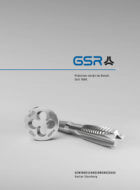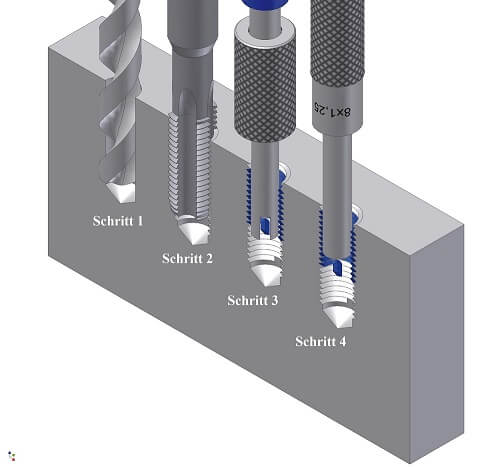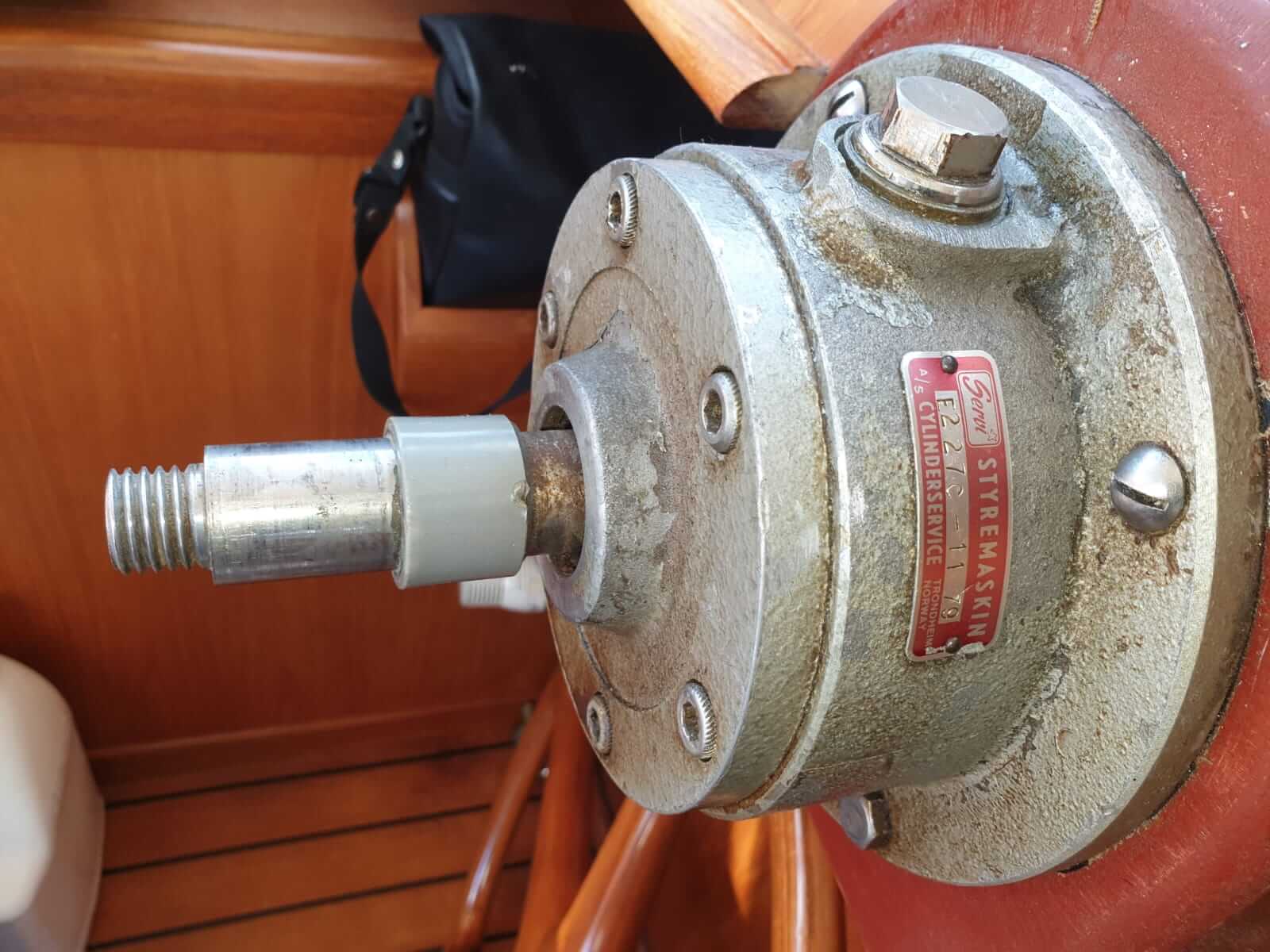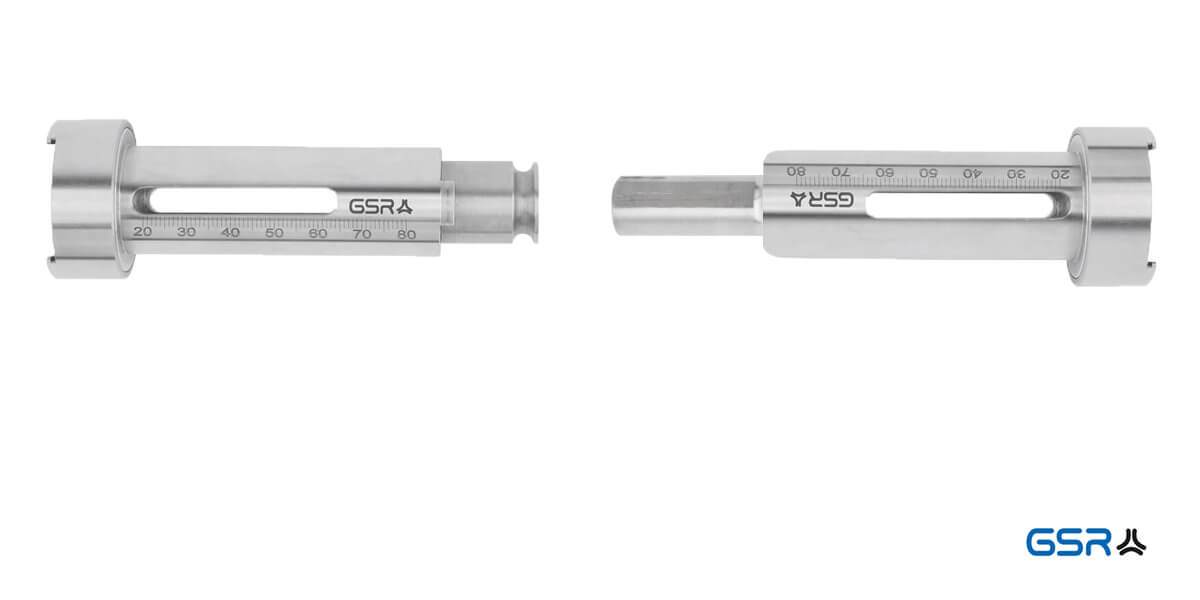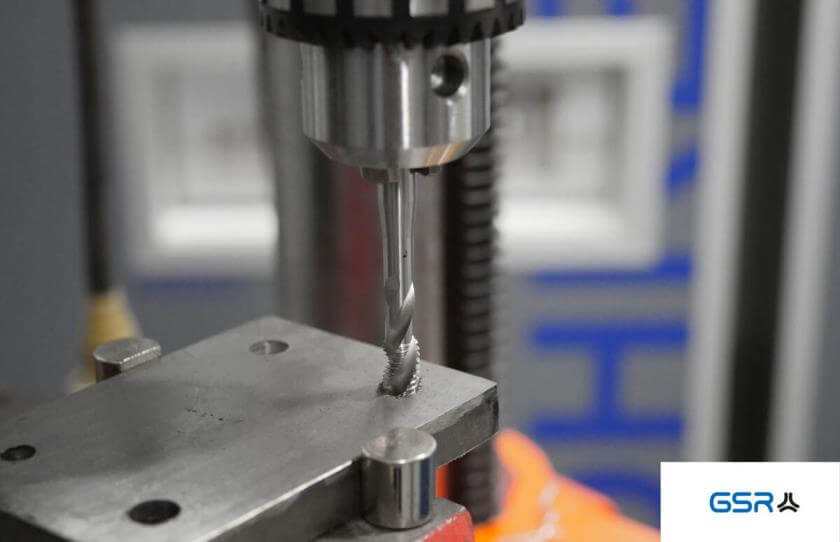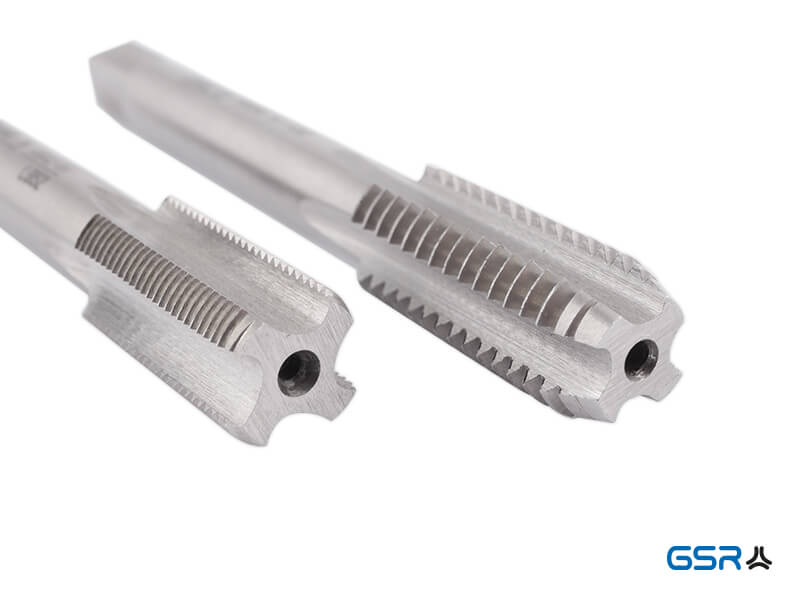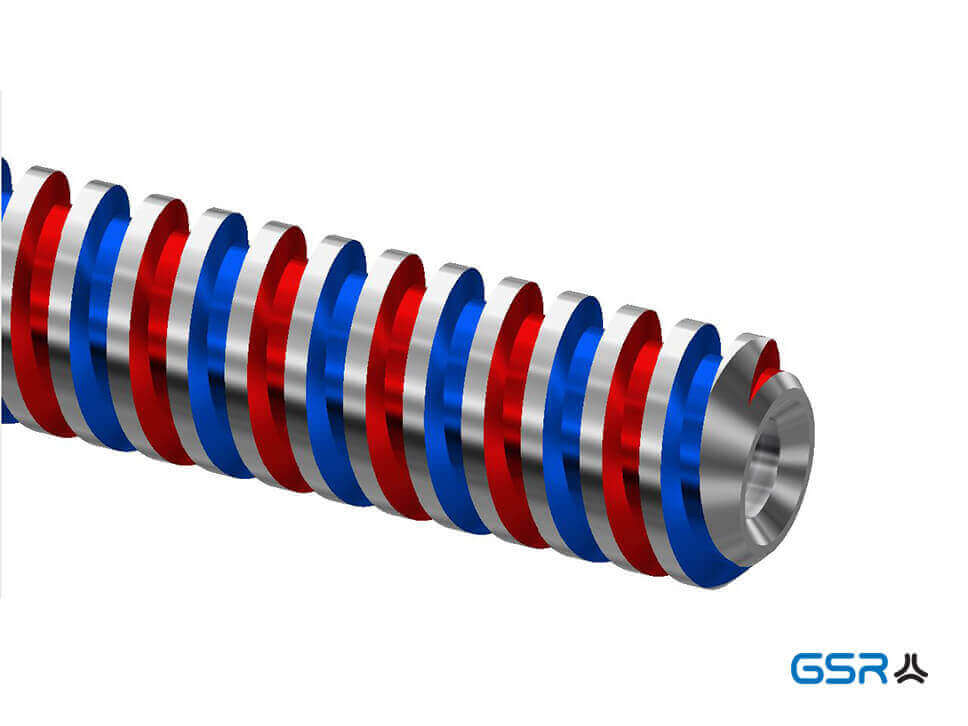Thread in microscopy –
the microscope-object thread
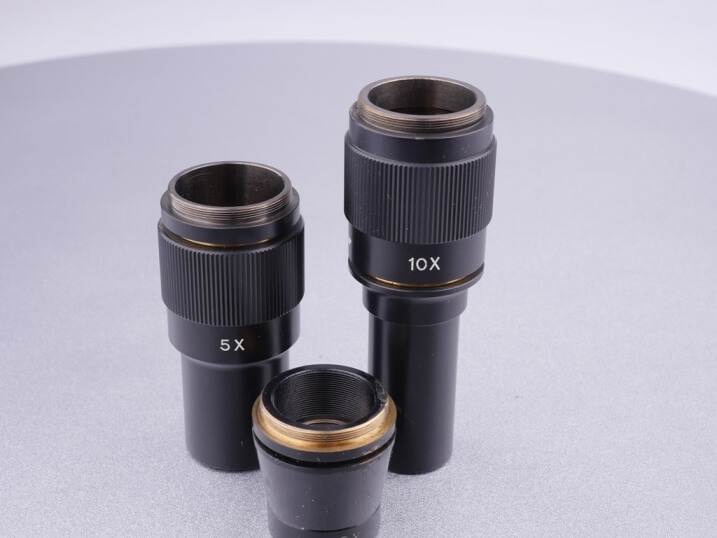
As we have already noted, threads surround us in everyday life. Threads are even used in microscopes.
Anwendung
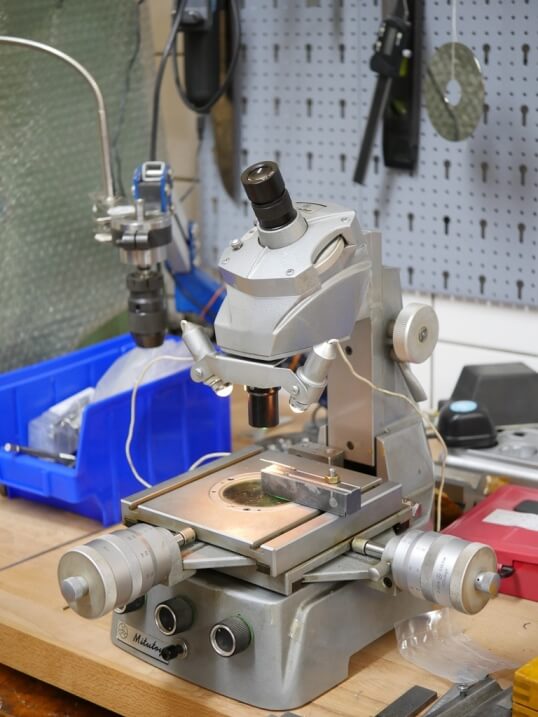
The first microscopes were already known in the 17th century. Nowadays there are both inexpensive hobby microscopes and very expensive and innovative microscopes for research. Put simply, a microscope magnifies small objects.
The thread in the microscope objective
The microscope objective is located directly above the object to be examined and is clamped in the turret of the microscope. Several of these objectives are built into a microscope. They are the first magnification stage of the microscope. The magnification effect (for example 2x, 4x, 10x, 40x, etc.) is written on the objective cover.
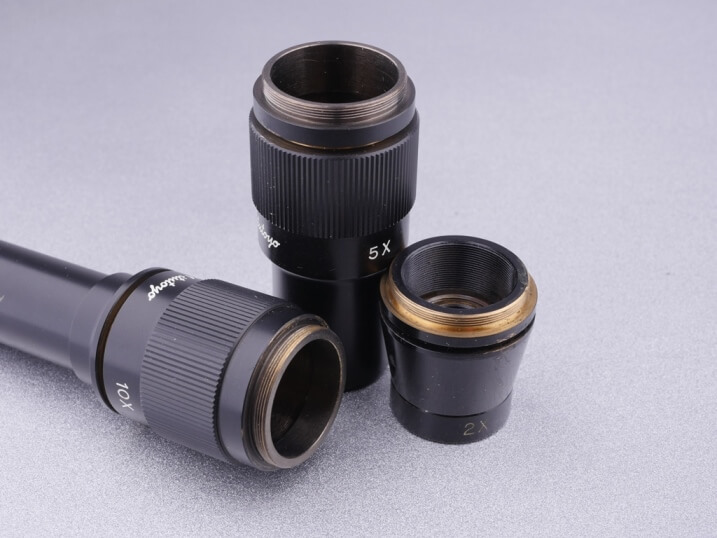
There is an external thread on the upper side of the microscope objective. The objective thread used in microscopy is also called RMS thread.
RMS-Gewinde
The microscope lens thread is called RMS thread W 0.8″ × 36 and is based on the British Whitworth thread. Although the abbreviation W here stands for Whitworth, it is a special standard of the RMS thread.
The thread is – as usual in the Anglo-Saxon area – indicated in inch or inch. It is therefore measured in threads per inch (1 inch = 25.4 mm). It has a flank angle of 55 degrees. The RMS thread is described and standardized in DIN EN ISO 8038-1 (DIN 58888).
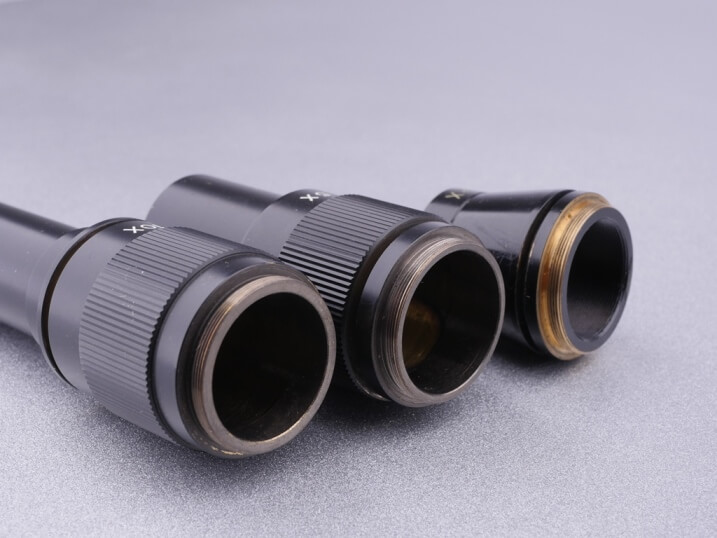
The RMS thread W 0.8″ × 36 corresponds to metric 20.32 mm × 0.71 mm.
Historical development of the RMS thread
The RMS thread is named after its namesake from the Royal Microscopical Society. The RMS is a society that is concerned with the science and application of microscopy. It was founded around 1839 and has been involved in the standardization of microscopy threads since around 1858. Before that many different connections existed. The RMS thread as a lens thread was also widely used in photography in the 19th century, but has not been able to establish itself until today.
The RMS still exists today and distributes the very well-known “Journal of Microscopy”. In 2016 the RMS celebrated its 175th anniversary.
“The question of standardization of the Objective Screw Thread was first discussed by the Microscopical Society in 1857, and the first sizing tools were issued in 1858. (…)
Objective Screw Thread.
Length of Thread on Objective, 0 125 in. ( = 3 1750 mm.).
Plain Fitting above Thread of Objective, 0 1 in. ( = 2 5400 mm) long, not to exeed 0 759 in. ( = 19 2784 mm.) in diameter.
Length of Screw of Nose-piece tob e not less than 0 125 in. ( = 3 1750 mm).”
Quelle: Journal of the Royal Microscopical Society, S. 230–231 (1915) http://www.biodiversitylibrary.org/item/18835#page/276/mode/1up
Manufacturer and the microscope thread
The predominant manufacturers, such as Zeiss West, use the RMS thread W 0.8″ x 36 for microscope lenses. Other suppliers such as Nikon or Olympus use M26 x 0.75 or M25 x 0.75. These thread standards correspond to the metric fine thread. This can be loaded more heavily due to the smaller pitch. The first number indicates the outer diameter in mm, while the second number indicates the pitch in mm. The flank angle of the metric fine thread is 60 degrees.
Further special threads of the microscope lens thread
In addition to the RMS thread, there are also many country-specific special threads. You will find an extract in the table below:
| Abbreviation | Thread type | Standard |
| RMS | Royal Microscope Society, Threaded connection for microscope objectives |
DIN 58888 und ISO 8038 1985 |
| AMO | Microscope Objective Thread, American microscope lens thread |
ASA B1.11-1958 (0,800 – 36 AMO) |
| BSMO | British microscope objective thread | BS 3569 – 1962 (0,800 – 36 BSMO) |
| ob | Romanian microscope lens thread | STAS 6852-81 |
Adapter: T2 screw thread M42 x 0.75
Also for microscope lens threads there are adapters to combine different lens thread sizes with different turret threads. A very well-known adapter is the T2 screw thread M42 x 0.75.
More pictures: Microscope Lens Thread
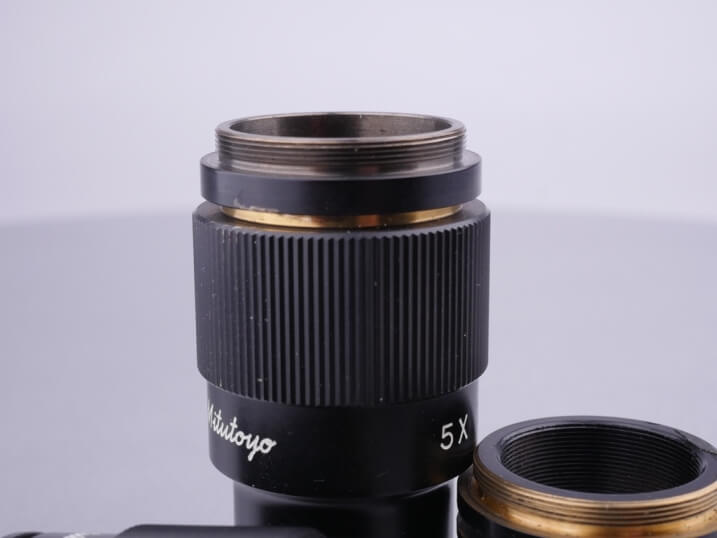
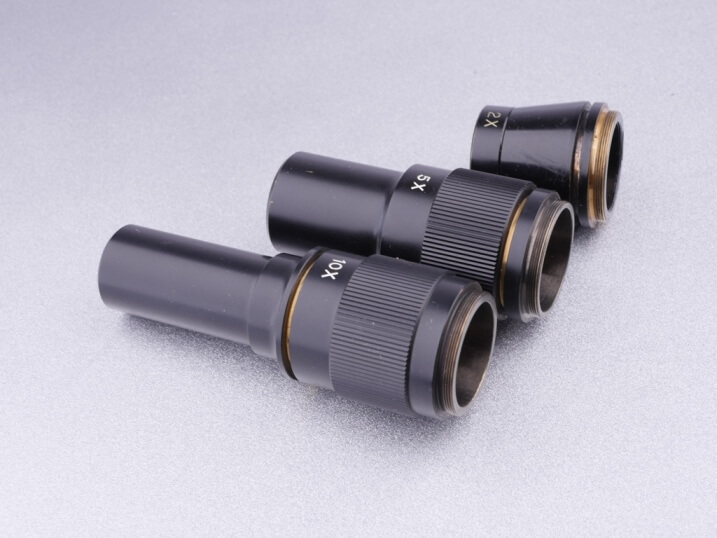
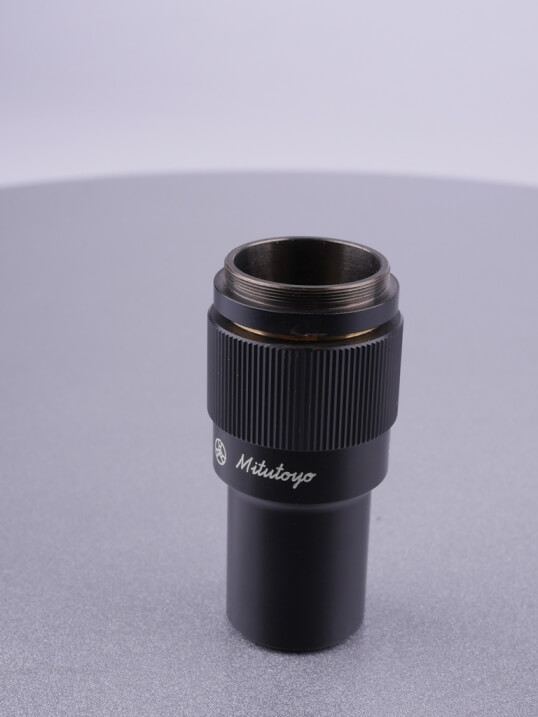
A very interesting blog with well prepared and further information about microscopy can be found here: www.lichtmikroskop.netwww.lichtmikroskop.net





